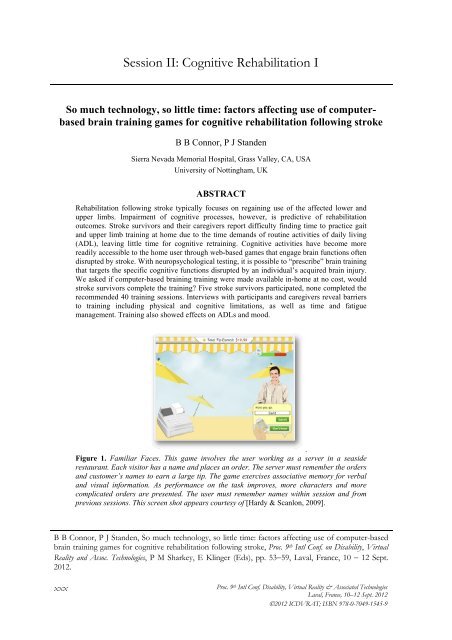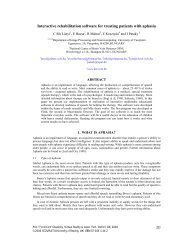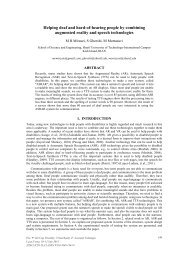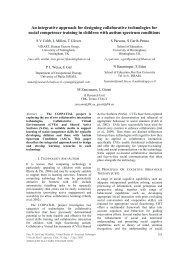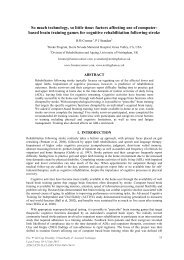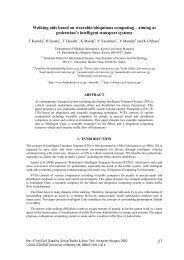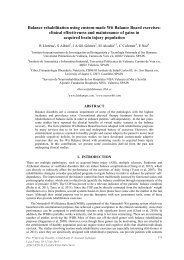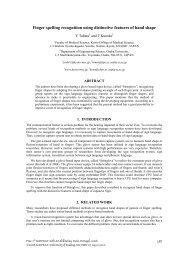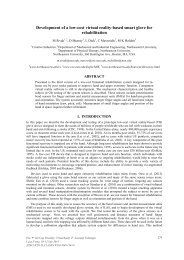Conference Book of Abstracts - ICDVRAT
Conference Book of Abstracts - ICDVRAT
Conference Book of Abstracts - ICDVRAT
You also want an ePaper? Increase the reach of your titles
YUMPU automatically turns print PDFs into web optimized ePapers that Google loves.
Session II: Cognitive Rehabilitation ISo much technology, so little time: factors affecting use <strong>of</strong> computerbasedbrain training games for cognitive rehabilitation following strokeB B Connor, P J StandenSierra Nevada Memorial Hospital, Grass Valley, CA, USAUniversity <strong>of</strong> Nottingham, UKABSTRACTRehabilitation following stroke typically focuses on regaining use <strong>of</strong> the affected lower andupper limbs. Impairment <strong>of</strong> cognitive processes, however, is predictive <strong>of</strong> rehabilitationoutcomes. Stroke survivors and their caregivers report difficulty finding time to practice gaitand upper limb training at home due to the time demands <strong>of</strong> routine activities <strong>of</strong> daily living(ADL), leaving little time for cognitive retraining. Cognitive activities have become morereadily accessible to the home user through web-based games that engage brain functions <strong>of</strong>tendisrupted by stroke. With neuropsychological testing, it is possible to “prescribe” brain trainingthat targets the specific cognitive functions disrupted by an individual’s acquired brain injury.We asked if computer-based braining training were made available in-home at no cost, wouldstroke survivors complete the training? Five stroke survivors participated, none completed therecommended 40 training sessions. Interviews with participants and caregivers reveal barriersto training including physical and cognitive limitations, as well as time and fatiguemanagement. Training also showed effects on ADLs and mood..Figure 1. Familiar Faces. This game involves the user working as a server in a seasiderestaurant. Each visitor has a name and places an order. The server must remember the ordersand customer’s names to earn a large tip. The game exercises associative memory for verbaland visual information. As performance on the task improves, more characters and morecomplicated orders are presented. The user must remember names within session and fromprevious sessions. This screen shot appears courtesy <strong>of</strong> [Hardy & Scanlon, 2009].B B Connor, P J Standen, So much technology, so little time: factors affecting use <strong>of</strong> computer-basedbrain training games for cognitive rehabilitation following stroke, Proc. 9 th Intl Conf. on Disability, VirtualReality and Assoc. Technologies, P M Sharkey, E Klinger (Eds), pp. 5359, Laval, France, 10 12 Sept.2012.xxxProc. 9 th Intl Conf. Disability, Virtual Reality & Associated TechnologiesLaval, France, 10–12 Sept. 20122012 <strong>ICDVRAT</strong>; ISBN 978-0-7049-1545-9


